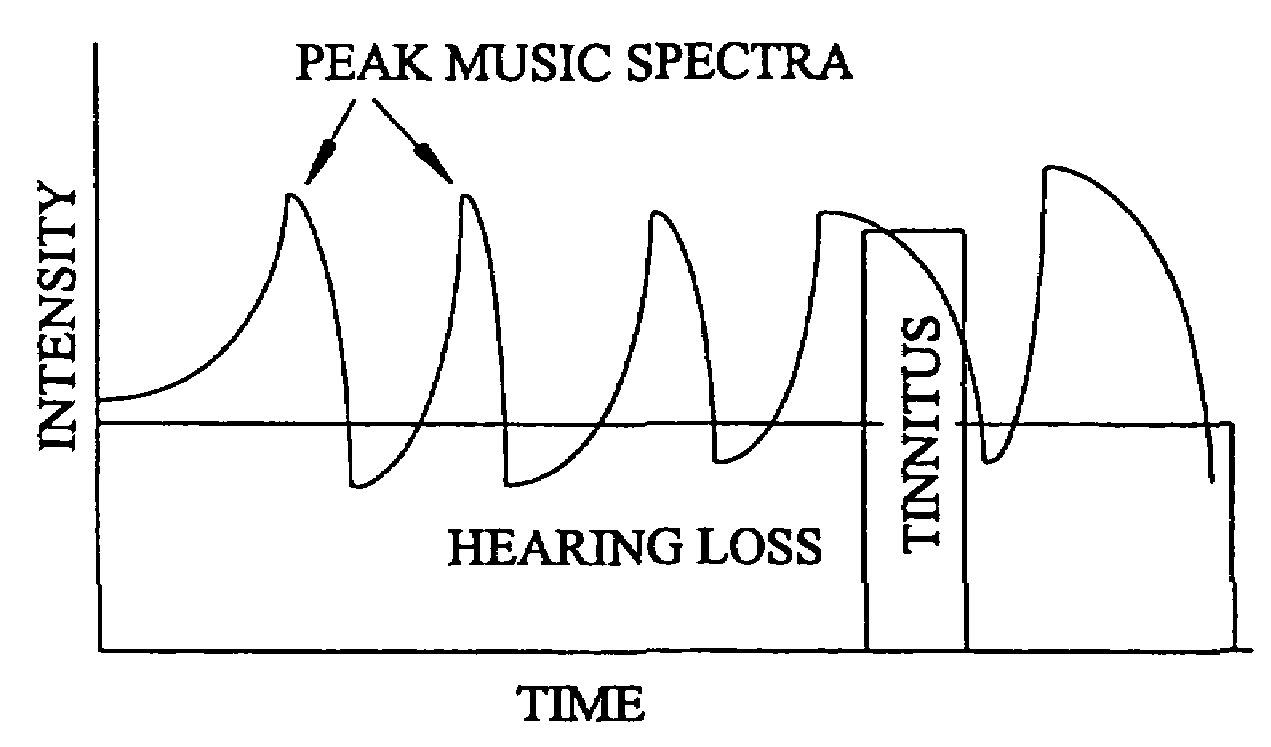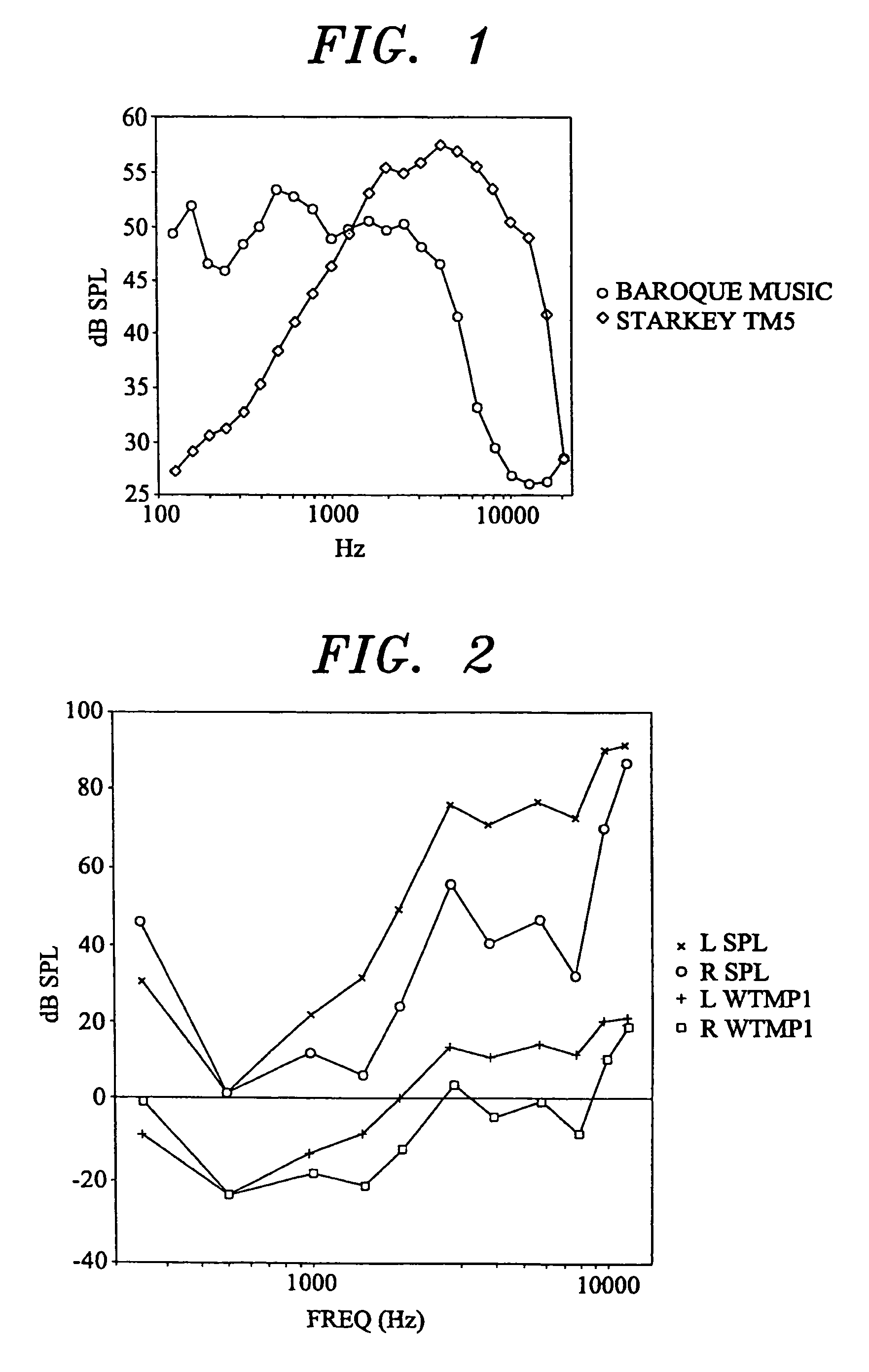Tinnitus rehabilitation device and method
a rehabilitation device and tinnitus technology, applied in the field of tinnitus rehabilitation devices, can solve the problems of inability to relax, depression, suicide, and few effective treatment options for tinnitus sufferers, and achieve the effect of sufficient perception of tinnitus
- Summary
- Abstract
- Description
- Claims
- Application Information
AI Technical Summary
Benefits of technology
Problems solved by technology
Method used
Image
Examples
example 1
[0060]FIG. 2 is a graphical representation of the relationship between a typical individual's hearing levels, tinnitus and their required TMP1 equalization curves. This individual has a steeply sloping high frequency bilateral hearing loss and tinnitus at 10,000 Hz, both greater on the left side. Consequently, the required equalization curves revolve around the equalizer's baseline, achieving a partial correction for hearing loss by boosting the amount of high frequency gain and also correspondingly attenuating the low frequencies. As the hearing loss and tinnitus is worse on the left, that ear receives correspondingly greater amplification. Because of the abnormal growth of loudness perception which usually accompanies sensorineural hearing loss, (recruitment, and / or the presence of hyperacusis), complete correction for hearing levels is not provided, as this may exceed the individual's loudness discomfort levels.
[0061]A tinnitus rehabilitation sound recording was then produced on ...
example 2
[0087]The audiogram for the participant chosen to demonstrate how the TMP1 accounts for a steeply-sloping asymmetrical hearing loss (see Example 1 above), was also chosen to demonstrate how the TRP algorithm modifies the intensity of the audio signal at selected frequencies to provide intermittent masking of the tinnitus. Tables 3 and 4 below show the calculations at each frequency for the left and right ears respectively using the TRP algorithm above. The baseline calculation was made as follows:
[0088] Baseline=0.5(A-B)+B=[0.5(LSPL10+LSPL12)-0.5(RSPL0.5+RSPL0.75]×0.5+0.5(RSPL0.5+RSPL0.75)=[0.5(89.5+91)-0.5(1.5+8.5)]×0.5+0.5(1.5+8.5)=(90.25-5)×0.5+5=47.625
[0089]
TABLE 3Corrections and CalculationsELC &SPLL. FreqP'sP'stransfer−(Hz)dB HLSPLfunctions=Baseline=×0.4= REQ250523.528.547.625−19.15×0.4−7.66500−107.5−2.547.625−50.15×0.4−20.067502.55.5847.625−39.65×0.4−15.8610001572247.625−25.65×0.4−10.261500256.531.547.625−16.15×0.4−6.4620004074747.625...
PUM
 Login to View More
Login to View More Abstract
Description
Claims
Application Information
 Login to View More
Login to View More - R&D
- Intellectual Property
- Life Sciences
- Materials
- Tech Scout
- Unparalleled Data Quality
- Higher Quality Content
- 60% Fewer Hallucinations
Browse by: Latest US Patents, China's latest patents, Technical Efficacy Thesaurus, Application Domain, Technology Topic, Popular Technical Reports.
© 2025 PatSnap. All rights reserved.Legal|Privacy policy|Modern Slavery Act Transparency Statement|Sitemap|About US| Contact US: help@patsnap.com



